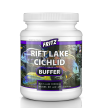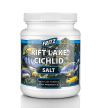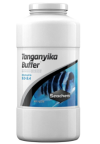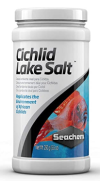Had a questions about Tanganyikan buffers… what do you guys use?
When I started keeping shellies I needed a buffer so I bought from where I was and got the ‘Rift Lake Cichlid Salts’ from WetSpot and its worked fine but not easy to get ahold of. I have to do an online WetSpot order and they are not set up to easily order from. Have to email and get a quote and pay shipping.
I have looked at the Seachem products but do I need both the buffer and salt? The WetSpot stuff is an all in one product that contains: buffer salts, calcium, magnesium. A container that treats 200 gallons for $8.99.
So Im shopping and also see Fritz products has some nicely priced products on Amazon but again a buffer and separate salt…
A little help from Tang keepers would be appreciated: tag @sir_keith, @fishguy1978, @lloyd378, @John58Ford, @cjag
When I started keeping shellies I needed a buffer so I bought from where I was and got the ‘Rift Lake Cichlid Salts’ from WetSpot and its worked fine but not easy to get ahold of. I have to do an online WetSpot order and they are not set up to easily order from. Have to email and get a quote and pay shipping.
I have looked at the Seachem products but do I need both the buffer and salt? The WetSpot stuff is an all in one product that contains: buffer salts, calcium, magnesium. A container that treats 200 gallons for $8.99.
So Im shopping and also see Fritz products has some nicely priced products on Amazon but again a buffer and separate salt…
A little help from Tang keepers would be appreciated: tag @sir_keith, @fishguy1978, @lloyd378, @John58Ford, @cjag




